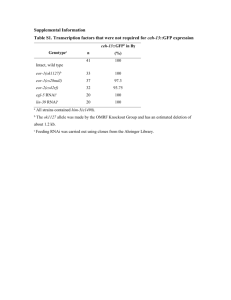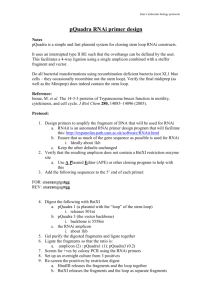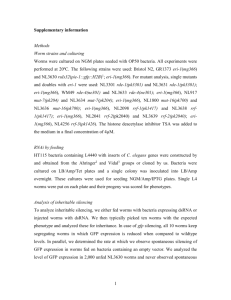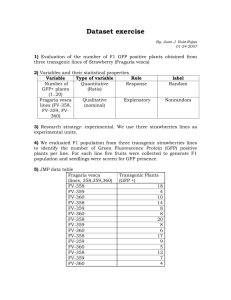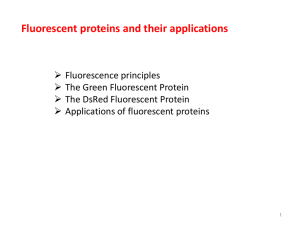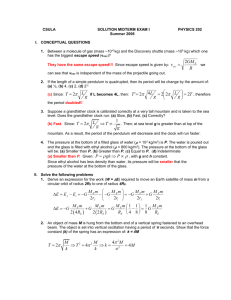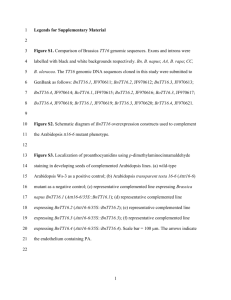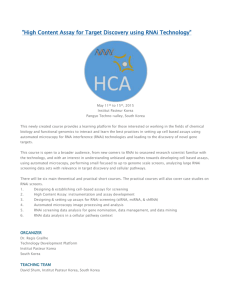Supplementary Figures
advertisement
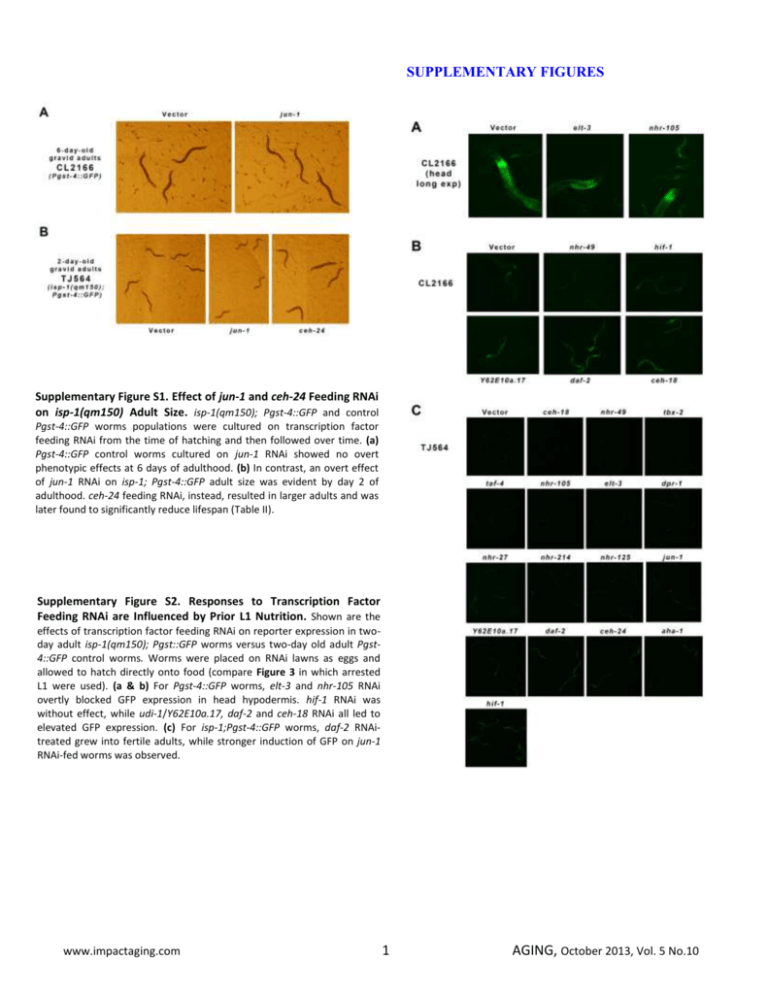
SUPPLEMENTARY FIGURES Supplementary Figure S1. Effect of jun-1 and ceh-24 Feeding RNAi on isp-1(qm150) Adult Size. isp-1(qm150); Pgst-4::GFP and control Pgst-4::GFP worms populations were cultured on transcription factor feeding RNAi from the time of hatching and then followed over time. (a) Pgst-4::GFP control worms cultured on jun-1 RNAi showed no overt phenotypic effects at 6 days of adulthood. (b) In contrast, an overt effect of jun-1 RNAi on isp-1; Pgst-4::GFP adult size was evident by day 2 of adulthood. ceh-24 feeding RNAi, instead, resulted in larger adults and was later found to significantly reduce lifespan (Table II). Supplementary Figure S2. Responses to Transcription Factor Feeding RNAi are Influenced by Prior L1 Nutrition. Shown are the effects of transcription factor feeding RNAi on reporter expression in twoday adult isp-1(qm150); Pgst::GFP worms versus two-day old adult Pgst4::GFP control worms. Worms were placed on RNAi lawns as eggs and allowed to hatch directly onto food (compare Figure 3 in which arrested L1 were used). (a & b) For Pgst-4::GFP worms, elt-3 and nhr-105 RNAi overtly blocked GFP expression in head hypodermis. hif-1 RNAi was without effect, while udi-1/Y62E10a.17, daf-2 and ceh-18 RNAi all led to elevated GFP expression. (c) For isp-1;Pgst-4::GFP worms, daf-2 RNAitreated grew into fertile adults, while stronger induction of GFP on jun-1 RNAi-fed worms was observed. www.impactaging.com 1 AGING, October 2013, Vol. 5 No.10 Supplementary Figure S3. Outlier Identification in Survival Analysis of Vector-only treated isp-1(qm150); gs-4::GFP worms. Eight independent experiments, separately undertaken by five different investigators (initials), measuring the lifespan of isp-1(qm150); Pgst-4::GFP worms cultured on vector-only RNAi-plates illustrate the degree of lifespan variability observed during the course of our studies (n=60 worms/experiment). Seven of the eight experiments did not differ significantly from each other (p>0.05, log rank test). For the eighth experiment, no overt differences in experimental variables could be discerned that distinguished it from the seven other replicate experiments, yet in this particular study worms lived ~10 days shorter, on average. We attribute this difference to chance sampling and consequently chose to leave this experiment in all our analyses (at the risk of losing statistical power). Experiments SR3 and SR4 were part of an unrelated study carried out at the same time and have been published elsewhere. Neither experiment was included in any of the present statistical analyses, but both have been included for comparison in the displays of Figure 4. Supplementary Figure S4. isp-1(qm150); Pgst-4::GFP Lifespan Studies for all 15 Transcription Factor RNAi Treatments. Survival curves for isp-1(qm150); Pgst-4::GFP animals treated with RNAi targeting the indicated transcription factor. Only extreme survival curves for each RNAi treatment are shown (for important information regarding vector-only RNAi, see Supplementary Figure S3). Descriptive statistics and significance testing for lifespan data is summarized in Table II and Supplementary File 3. www.impactaging.com 2 AGING, October 2013, Vol. 5 No.10 Supplementary Figure S5. Pgst-4::GFP Lifespan Studies. Survival curves for Pgst-4::GFP animals treated with RNAi targeting the indicated transcription factor. Data are control studies for the isp-1(qm150); Pgst-4::GFP experiments shown in Figure 4. Descriptive statistics and significance testing are summarized in Table II and Supplementary File 3. www.impactaging.com 3 AGING, October 2013, Vol. 5 No.10
